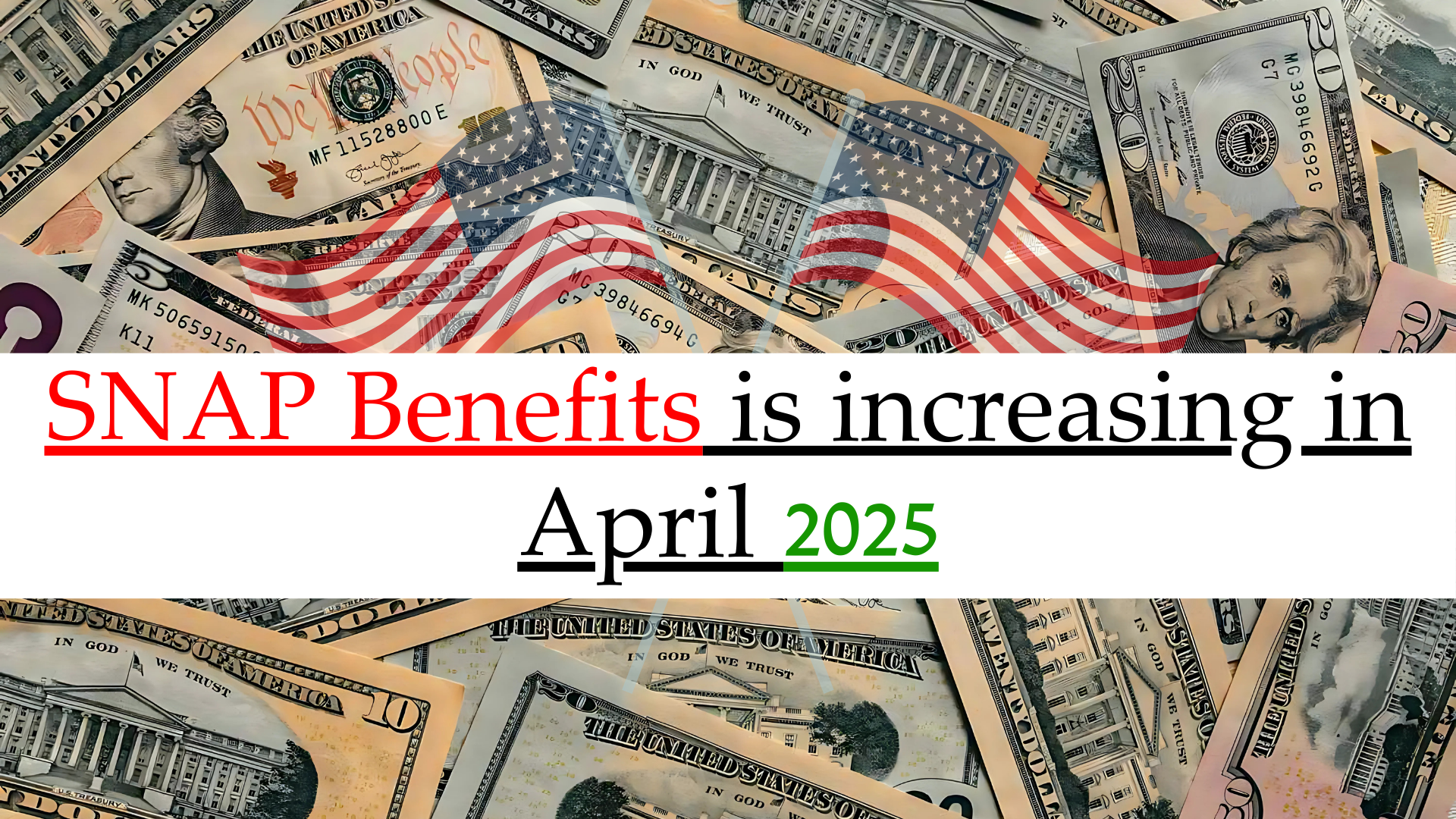SNAP Benefits : The Supplemental Nutrition Assistance Program (SNAP), formerly known as food stamps, provides crucial nutritional support for millions of low-income Americans.
As April 2025 approaches, significant changes to SNAP benefits are being implemented through the Cost-of-Living Adjustment (COLA). These adjustments aim to ensure that benefit amounts keep pace with rising food costs and inflation.
Background on SNAP
SNAP represents one of America’s most important safety net programs, helping approximately 42 million individuals access nutritious food.
The program operates through Electronic Benefit Transfer (EBT) cards, which recipients use like debit cards at authorized retailers to purchase eligible food items.
SNAP Benefits The 2025 COLA Increase Explained
The COLA adjustment for SNAP in April 2025 reflects the government’s response to ongoing economic pressures affecting food prices.
Based on my knowledge cutoff in October 2024, I can share what was anticipated, though specific percentage increases may have been finalized after my knowledge cutoff.
Key Changes Taking Effect
-
Increased Maximum Benefit Amounts: All household sizes will see an increase in the maximum monthly benefit allotment. This adjustment reflects the rising costs of the Thrifty Food Plan, which is the basis for SNAP benefit calculations.
-
Adjusted Income Eligibility Thresholds: The income limits determining SNAP eligibility have been raised to account for inflation, potentially expanding access to more households.
-
Higher Standard Deduction: The standard deduction used in benefit calculations has increased, which effectively allows recipients to keep more of their income before it affects benefit amounts.
-
Updated Utility Allowances: The standardized amounts for heating, cooling, and utility costs used in benefit calculations have been adjusted upward.
Impact on Different Household Sizes
The COLA adjustment creates a sliding scale of increases based on household size. Larger households will see greater dollar increases, though the percentage change remains consistent across all household sizes.
For example, a single-person household might see their maximum benefit increase by approximately $30-40 per month, while a family of four could receive an additional $100-120 in monthly benefits.
Understanding Your New Benefit Amount
Recipients do not need to take any action to receive the increased benefits. The adjustments will be applied automatically to EBT cards during the April 2025 distribution. However, it’s important to note that not all households receive the maximum benefit amount, as actual benefits depend on:
-
Household income
-
Household size
-
Allowable deductions
-
Other factors specific to individual circumstances
Most recipients will receive a notice from their state SNAP agency detailing their specific new benefit amount prior to the first increased payment.
State Variations in Implementation
While SNAP is a federal program, it’s administered by state agencies, creating some variations in how and when the COLA increases are implemented:
-
Most states will apply the increase beginning with April 2025 benefits
-
Some states may implement the changes on a rolling basis according to recipients’ regular issuance dates
-
A few states might issue supplemental payments to account for the difference
Recipients should check with their local SNAP office for state-specific implementation details.
Context for the 2025 COLA Increase
The 2025 adjustment follows a pattern of annual COLA increases that have become increasingly important amid persistent food inflation.
Following the end of emergency allotments that were implemented during the COVID-19 pandemic, many households experienced what was termed the “hunger cliff” when benefits returned to standard levels.
The 2025 COLA increase helps address some of these concerns, though advocates note that the adjustments may still lag behind real-world food price increases experienced by many families.
Maximizing Your SNAP Benefits
With the upcoming benefit increase, recipients can make the most of their SNAP funds by:
-
Taking advantage of Double Up Food Bucks programs at farmers’ markets, which match SNAP spending on fresh produce
-
Looking for SNAP-Ed programs in your community that offer free nutrition education and cooking classes
-
Planning meals based on sales and seasonal items to stretch benefit dollars further
-
Reviewing deductions to ensure all eligible expenses are being counted in benefit calculations
SNAP Benefits Looking Ahead: The Future of SNAP Funding
The 2025 COLA adjustment comes amid ongoing policy discussions about the future of nutrition assistance programs.
The most recent Farm Bill negotiations included debates about SNAP funding levels and program requirements, though specific outcomes will depend on legislative priorities and economic conditions.
Additional Resources for SNAP Recipients
As the April 2025 changes approach, recipients should know where to find support:
-
SNAP Hotline: Contact your state’s dedicated SNAP information line
-
Local Community Action Agencies: Many offer application assistance and additional support services
-
Online Account Management: Most states offer online portals where recipients can check benefit amounts and updates
-
Legal Aid Organizations: Can provide assistance if there are issues with benefit calculations or delays
SNAP Benefits Conclusion
The April 2025 COLA increase for SNAP benefits represents an important adjustment to help low-income households keep pace with rising food costs.
While the increases may not fully offset inflation for all families, they provide crucial additional support for millions of Americans facing food insecurity.
Recipients should look for official communications from their state SNAP agencies for personalized information about their specific benefit changes.
By understanding these adjustments and maximizing available resources, SNAP households can better meet their nutritional needs despite ongoing economic challenges.
Also Read This-
-
These 6 Bicentennial Quarters coins worth is $250 Million each – Still in Circulation
-
DWP’s £559 Weekly State Pension is increasing in May 2025, Who is Eligible for this?
-
6 Rare Dimes – $190 Million reach in market
